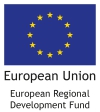Harmonising implementation in 2021-2027
Friday, June 12, 2020 - 07:51
HIT or Harmonised Implementation Tools help Interreg programmes manage, improve and streamline their overall operation. In practise, HIT consists of best-practices, forms and templates. It was first introduced for the current programming period and will be carried over into the new one. Right now, the focus is on publishing an updated Application Form for potential beneficiaries.
Creating a harmonised approach is huge effort and thus requires active input from current programmes; what has worked and what did not? How can we improve the existing and what new elements need to be introduced?
As the Central Baltic programme has been using HIT already, we have been keen on participating in the development of the new toolset. In the programme we have a dedicated team working specifically with this topic. Our IT Manager Veli-Pekka Suuronen is part of the team.
Veli-Pekka, why do we want to participate?
We believe in harmonisation as it brings benefits to all parties: programme bodies, applicants, beneficiaries, other stakeholders. When programmes work with similar processes and tools, it is easier to project applicants and partners to work with potentially several programmes. Also having several experts from several programmes work on tools and procedures brings some legal certainty for the programme that they are applying the regulations correctly.
What is the benefit for us?
Legal certainty, having similar procedures and tools with others and saving resources on planning programme administration, as much of the effort is shared by a lot of programmes.
Have there been any challenges?
Yes. There’s a lot of history in programmes and flexibility in changing the ways the programmes want to work differs a lot.
Where do we stand with HIT at the moment?
Project selection (i.e. Application Form and Assessment) are fundamentally finished. Partner and project reporting is being developed at the moment.
The Panorama Magazine by the European Commission provides a good overview for HIT and its current status (p. 38), if you are interested in learning more: https://ec.europa.eu/regional_policy/sources/docgener/panorama/pdf/mag72/mag72_en.pdf
Creating a harmonised approach is huge effort and thus requires active input from current programmes; what has worked and what did not? How can we improve the existing and what new elements need to be introduced?
As the Central Baltic programme has been using HIT already, we have been keen on participating in the development of the new toolset. In the programme we have a dedicated team working specifically with this topic. Our IT Manager Veli-Pekka Suuronen is part of the team.
Veli-Pekka, why do we want to participate?
We believe in harmonisation as it brings benefits to all parties: programme bodies, applicants, beneficiaries, other stakeholders. When programmes work with similar processes and tools, it is easier to project applicants and partners to work with potentially several programmes. Also having several experts from several programmes work on tools and procedures brings some legal certainty for the programme that they are applying the regulations correctly.
What is the benefit for us?
Legal certainty, having similar procedures and tools with others and saving resources on planning programme administration, as much of the effort is shared by a lot of programmes.
Have there been any challenges?
Yes. There’s a lot of history in programmes and flexibility in changing the ways the programmes want to work differs a lot.
Where do we stand with HIT at the moment?
Project selection (i.e. Application Form and Assessment) are fundamentally finished. Partner and project reporting is being developed at the moment.
The Panorama Magazine by the European Commission provides a good overview for HIT and its current status (p. 38), if you are interested in learning more: https://ec.europa.eu/regional_policy/sources/docgener/panorama/pdf/mag72/mag72_en.pdf



